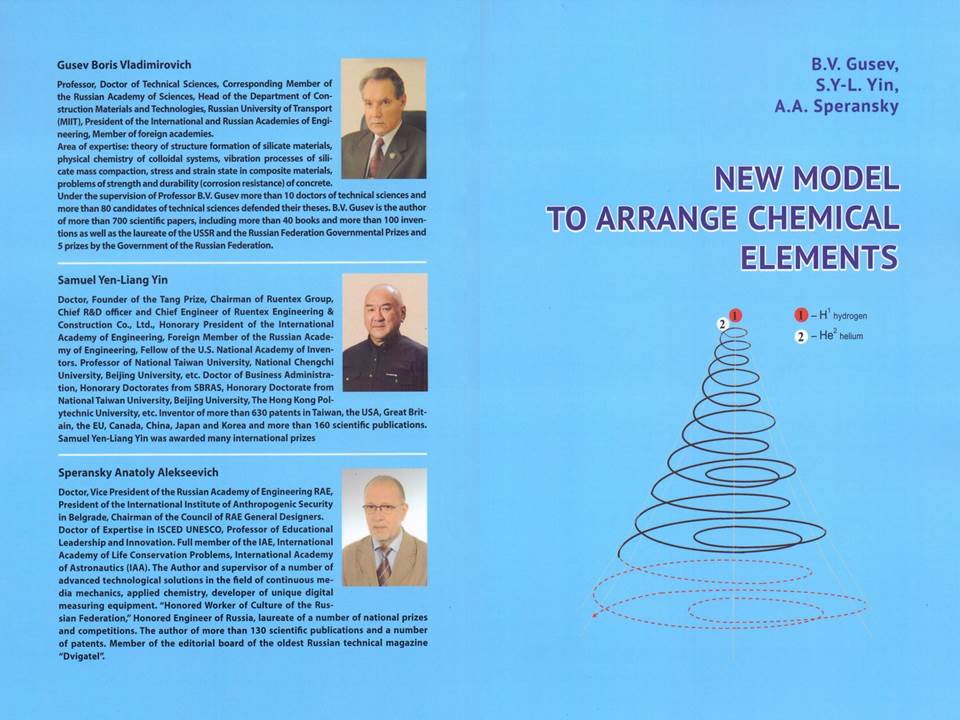
The Periodic Law and its tabular display of the chemical elements is an outstanding discovery of humankind. At the end of 2019, the world scientific community under the auspices of the UN celebrated the 150th anniversary of this discovery. In terms of advancing knowledge on periodicity, there has been published a huge number of works, which emphasizes the importance of the discovery. Currently, the Table contains 118 elements, but not all of them are found in nature, since some have been obtained artificially. In addition, according to Nobel Prize winner N. N. Semyonov, the Table is far from being perfect.
Considering the concept of the Universe, the authors took the physical model of the Big Bang and expanding Universe as a basis and set the task to describe the elements of the Periodic Table in the form of a three-dimensional expanding matrix of chemical elements. Hydrogen (H) and helium (He) are
at the top of the matrix being the basis for the creation of subsequent elements and occupying zero and first periods. The other elements serving as facets of this structure are arranged along the expanding spiral.
Another important consideration is the idea of the origin and evolution of the Universe as well as the development of all living and non-living in it in a spiral order. It is obvious for the living nature, as to non-living nature, it was assumed that chemical elements might serve as the “building blocks” for this spiral. These elements will interact with each other, and, thus, form molecules. The entire material inorganic world is being generated from molecules giving rise to further natural processes of creating living nature: plants, animals and people. Thus, the entire development of the mineral and living world proceeds in spirals.
The presented generalizations show that the concept of cyclicity and block structure of elements is preferable to arrange chemical elements. It becomes obvious in the process of analyzing and generalizing nuclear masses in block periods, where neutrons and protons ratios are averagely equalized within the block
Physical confirmation of cyclicity makes up the concept of block structure and harmonizes the arrangement of elements in the Three-Dimensional Matrix of Chemical Elements (TDMCE). It is of great importance not only for chemistry, but might be useful for other sciences, including cosmology.
The book may be useful for studying the current state of the Periodic Table of Chemical Elements. It may also be of interest to scientists, chemical workers, teachers and students of chemical and associated specialties.

